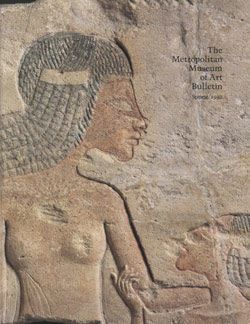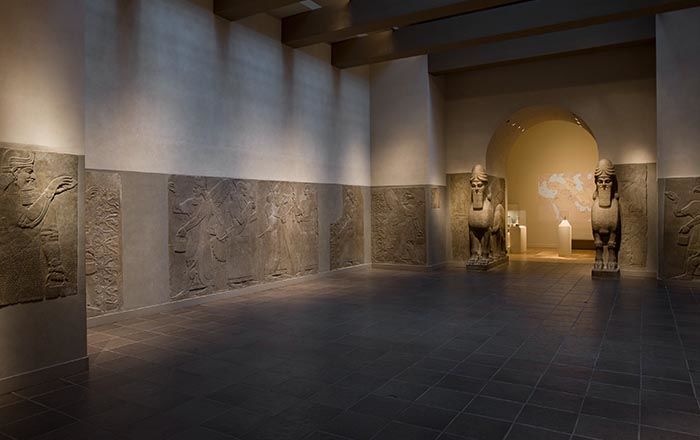Rhyton terminating in a horned lion
Not on view
This ceramic vessel is called a ‘rhyton’ (from the Greek rheo, meaning ‘flow through’) by scholars because it has a spout at the bottom. Like many rhyta, it consists of a horn-shaped beaker and a hollow sculptural element, in this case in the form of the foreparts of a winged lion with horns that are now missing. The lion’s legs are outstretched – including its hind legs with are depicting in shallow relief on the sides of the beaker – suggesting that the creature is running or leaping. The spout is in the lion’s chest. The beaker and the sculptural element were made separately of a dark grey clay. Originally it was painted, but now the only preserved color is inside the mouth, which is painted red.
Rhyta originated in the Achaemenid Persian Empire, combining the older Near Eastern traditions of animal-headed beakers and Iranian traditions of animal-shaped vessels. They were used at royal banquets, where the Persian king displayed his wealth and power, and the ability to drink skillfully from a rhyton marked one as a member of the elite who were invited to such banquets. Rhyta were thus symbols of high status, and this in turn inspired the creation of imitations in less expensive materials, such as clay.
This image cannot be enlarged, viewed at full screen, or downloaded.


